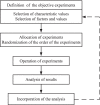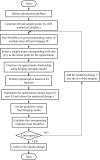Recent progress in minimizing the warpage and shrinkage deformations by the optimization of process parameters in plastic injection molding: a review
- PMID: 35194289
- PMCID: PMC8831005
- DOI: 10.1007/s00170-022-08859-0
Recent progress in minimizing the warpage and shrinkage deformations by the optimization of process parameters in plastic injection molding: a review
Abstract
The quality control of plastic products is an essential aspect of the plastic injection molding (PIM) process. However, the warpage and shrinkage deformations continue to exist because the PIM process is easily interfered with by several related or independent process parameters. Thus, great efforts have been devoted to optimizing process parameters to minimize the warpage and shrinkage deformations of products during the last decades. In this review, we begin by introducing the manufacturing process in PIM and the cause of warpage and shrinkage deformations, followed by the mechanism about how process parameters, like mold temperature, melt temperature, injection rate, injection pressure, holding pressure, holding and cooling duration, affect those defects. Then, we summarize the recent progress of the design of experiments and four advanced methods (artificial neural networks, genetic algorithm, response surface methodology, and Kriging model) on optimizing process parameters to minimize the warpage and shrinkage deformations. In the end, future perspectives of quality control in injection molding machines are discussed.
Keywords: Injection molding; Optimization methods; Process parameters; Shrinkage; Warpage.
© The Author(s), under exclusive licence to Springer-Verlag London Ltd., part of Springer Nature 2022.
Conflict of interest statement
Conflicts of interestThe authors declare that they have no conflicts of interest.Competing interestsThe authors declared that they have no conflicts of interest within the last 3 years of beginning the work.
Figures








References
-
- Singh SK, Khawale RP, Chen H, Zhang H, Rai R. Personal protective equipments (PPEs) for COVID-19: a product lifecycle perspective. Int J Prod Res. 2021;2021:1–22. doi: 10.1080/00207543.2021.19155-11. - DOI
-
- Vahabi H, Wu H, Saeb MR, Koo JH, Ramakrishna S (2021) Electrospinning for developing flame retardant polymer materials: current status and future perspectives. Polymer 2021:123466. 10.1016/j.polymer.2021.123466 - DOI
-
- Abdul R, Guo G, Chen JC, Yoo JJW. Shrinkage prediction of injection molded high density polyethylene parts with taguchi/artificial neural network hybrid experimental design. Int J Interactive Design Manuf (IJIDeM) 2020;14:345–357. doi: 10.1007/s12008-019-00593-4. - DOI
-
- Haidiezul A, Hazwan M, Lee WS, Najihah NF, Fadhli I (2020) Shrinkage optimisation on the 3D printed part using Full Factorial Design (FFD) optimisation approach. IOP Conference Series: Materials Science and Engineering 932:012109. 10.1088/1757-899X/932/1/012109 - DOI
Publication types
LinkOut - more resources
Full Text Sources
